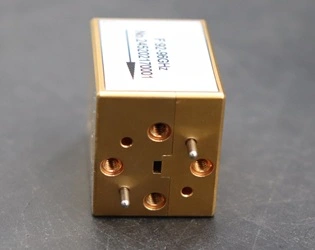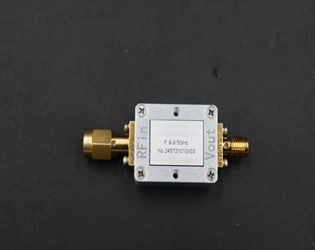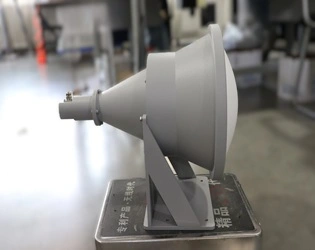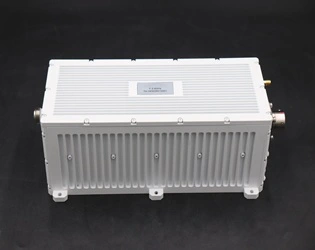BLOG

How does Double Ridge Straight Waveguide compare with single ridge ones?
March 13, 2025
When it comes to high-frequency signal transmission in modern microwave systems, the choice between Double Ridge Straight Waveguide and single ridge waveguides can significantly impact system performance. Double Ridge Straight Waveguides offer superior bandwidth capabilities, operating across a broader frequency range while maintaining excellent power handling capacity. Compared to their single ridge counterparts, these waveguides provide reduced cutoff frequencies, improved impedance matching, and enhanced signal integrity—crucial advantages for demanding applications in satellite communications, radar systems, and defense technologies. Advanced Microwave Technologies Co., Ltd, with over 20 years of industry experience, has perfected the design and manufacturing of these essential microwave components to meet the increasing demands of modern high-frequency applications.
How Does a Waveguide Isolator Prevent Signal Reflection and Backpropagation?
March 12, 2025
In the realm of microwave transmission systems, maintaining signal integrity is paramount. Signal reflection and backpropagation are common challenges that can severely degrade system performance and potentially damage sensitive equipment. Waveguide isolators represent an elegant and effective solution to these problems. These specialized devices allow microwave signals to propagate freely in the forward direction while effectively blocking signals traveling in the reverse direction. This unidirectional characteristic makes waveguide isolators essential components in many high-frequency applications, including radar systems, satellite communications, and advanced telecommunications infrastructure. A waveguide isolator functions based on the principles of Faraday rotation, utilizing ferromagnetic materials under the influence of a permanent magnetic field to create non-reciprocal transmission properties. This specialized design enables the isolator to provide high forward transmission with minimal loss while simultaneously offering substantial attenuation (typically 20 dB or more) for reverse signals. By preventing signal reflection and backpropagation, waveguide isolators protect sensitive components, enhance system stability, and maintain optimal performance across the entire microwave transmission chain..webp)
What makes the E-Plane Tee stand out in terms of design and functionality?
March 12, 2025
The E-Plane Tee represents one of the most ingenious components in microwave engineering, distinguished by its unique design and exceptional functionality. This specialized waveguide component features a junction where the auxiliary arm connects directly to the broad wall of the main waveguide, creating an E-plane configuration that allows for precise power division and signal manipulation. What truly makes the E-Plane Tee stand out is its ability to maintain phase coherence while splitting power, its exceptional bandwidth capabilities, and its remarkable efficiency in high-frequency applications. The distinctive design enables superior electric field alignment within the waveguide structure, resulting in minimal insertion loss and optimal power distribution. In competitive microwave systems where signal integrity and power handling are paramount, the E-Plane Tee delivers unmatched performance through its elegant yet robust engineering approach, making it indispensable in advanced communication systems, radar applications, and satellite technologies.
What are the different types of coaxial cable adapters, and when should each type be used?
March 12, 2025
Coaxial Cable Adapters are essential components in RF and microwave systems, serving as critical connectors that enable seamless integration between different types of cables and equipment. These specialized adapters play a vital role in maintaining signal integrity across various frequencies while accommodating different connector types, impedances, and physical dimensions. Understanding the different types of Coaxial Cable Adapters and their appropriate applications is crucial for engineers and technicians working in telecommunications, satellite communications, defense systems, and other high-frequency applications. This comprehensive guide explores the various types of adapters available, their specific use cases, and how to select the right adapter for your particular requirements.
What is a coaxial detector, and how does it function in electronic measurement systems?
March 11, 2025
A Coaxial Detector is a specialized electronic component designed to convert high-frequency radio frequency (RF) and microwave signals into measurable DC or low-frequency outputs that can be easily analyzed by standard measurement equipment. These essential devices function as the bridge between complex high-frequency signals and readable measurements in electronic systems. By utilizing semiconductor diodes to rectify RF signals, coaxial detectors enable engineers to monitor signal strength, detect the presence of RF energy, and perform accurate power measurements across various applications including telecommunications, radar systems, satellite communications, and laboratory testing environments..webp)
What is a Planar Spiral Antenna, and How Does It Differ from Other Types of Antennas?
March 11, 2025
A Planar Spiral Antenna represents one of the most innovative designs in modern antenna technology, characterized by its flat, spiral-shaped conductive pattern etched onto a dielectric substrate. Unlike conventional antennas that often feature complex three-dimensional structures, the Planar Spiral Antenna maintains a low-profile, two-dimensional configuration while delivering exceptional wideband performance. What truly sets this antenna apart from other designs is its inherent ability to provide circular polarization and operate efficiently across an extremely wide frequency range—often spanning multiple octaves—without requiring additional matching networks. This distinctive capability makes Planar Spiral Antennas particularly valuable in advanced communication systems, electronic warfare applications, and signal intelligence where ultra-wideband performance and direction-finding capabilities are essential. Their compact form factor, combined with remarkable frequency versatility, presents significant advantages over traditional dipole, monopole, patch, and horn antennas, which typically operate within much narrower bandwidth constraints.
How does the point focusing horn lens antenna improve the directionality and gain of a signal?
March 11, 2025
The Point Focusing Horn Lens Antenna represents a significant advancement in microwave antenna technology, offering exceptional improvements in signal directionality and gain. This specialized antenna combines a conical horn or conical corrugated horn with a convex lens to create a focused beam that forms a precise focal spot at a designed distance. Unlike conventional antennas, the point focusing design concentrates electromagnetic energy to a specific point, dramatically enhancing signal strength and directional control. This precision focusing capability makes it invaluable for applications requiring high gain, minimal signal loss, and exceptional directionality across microwave and millimeter-wave frequencies. As wireless communications and sensing systems continue to demand greater performance, the point focusing horn lens antenna provides an elegant solution by efficiently channeling electromagnetic energy exactly where it's needed.
What is an AC Power Amplifier, and How Does it Differ from Other Types of Power Amplifiers?
March 10, 2025
An AC power amplifier is a specialized electronic device designed to increase the amplitude of alternating current (AC) signals while maintaining signal integrity and waveform characteristics. Unlike other types of power amplifiers such as DC amplifiers that work with direct current signals or RF amplifiers that operate at radio frequencies, AC Power Amplifiers are specifically engineered to handle standard AC electrical signals, typically in the range of 50-60Hz up to several kilohertz. These amplifiers are distinguished by their ability to provide high voltage and current gain while operating directly from AC power sources, making them ideal for applications requiring substantial power delivery with minimal distortion across a wide frequency spectrum.




